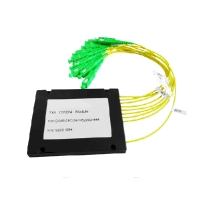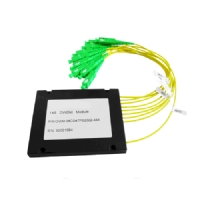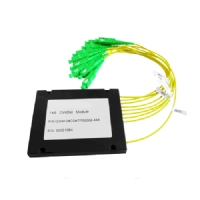
DWDM stands for Dense wavelength-division multiplexing. This technique multiplexes optical signals together on one single fiber. For this it uses different colors (wavelength) which are combined in a mux. The device where the optical signals are multiplexed and de-multiplexed is called a MUX, it is also called fiber optical multiplexer or cwdm multiplexer.
Basically all optical transmission is done by dual fibers where one fiber is transporting data from east to west and the other west to east hence one WDM MUX has a multiplexer and a de-multiplexer. There are 2 standards for Multiplexing: CWDM and DWDM. The main difference is the wavelength steps between the channels, for CWDM this is 20nm (course) and for DWDM this is typically 0.8nm (dense). The most common DWDM technique is the 100 GHz C-band which has steps of 0.8nm and works from the 1530 to 1570nm band.
Reach Optics offers standard 3 types of muxes: 8channels ,16channels and 40channels. We have standardize our 8 channels mux from channel 28 to 35 and for these channels we try to keep stock on all the 80km SFP+/SFP10G and XFP. The 40 channels mux starts at channel 20 till 59. All DWDM muxes have the ABS Box module type and 19 inch rack mounts type that the MUX and DEMUX inside.
#R-100G-8CH-DWDM Mux Demux
Reach Optics' Dense Wavelength Division Multiplexing (dwdm,wdm,Dense wavelength division multiplexer) refers originally to optical signals multiplexed within the 1550 nm band so as to leverage the capabilities (and cost) of erbium doped fiber
amplifie
#R-200G-8CH-DWDM Mux Demux
1.8-Channel 200Ghz DWDM Module
2.High reliability and stability
3.Low insertion loss
4.Low polarization dependent loss




